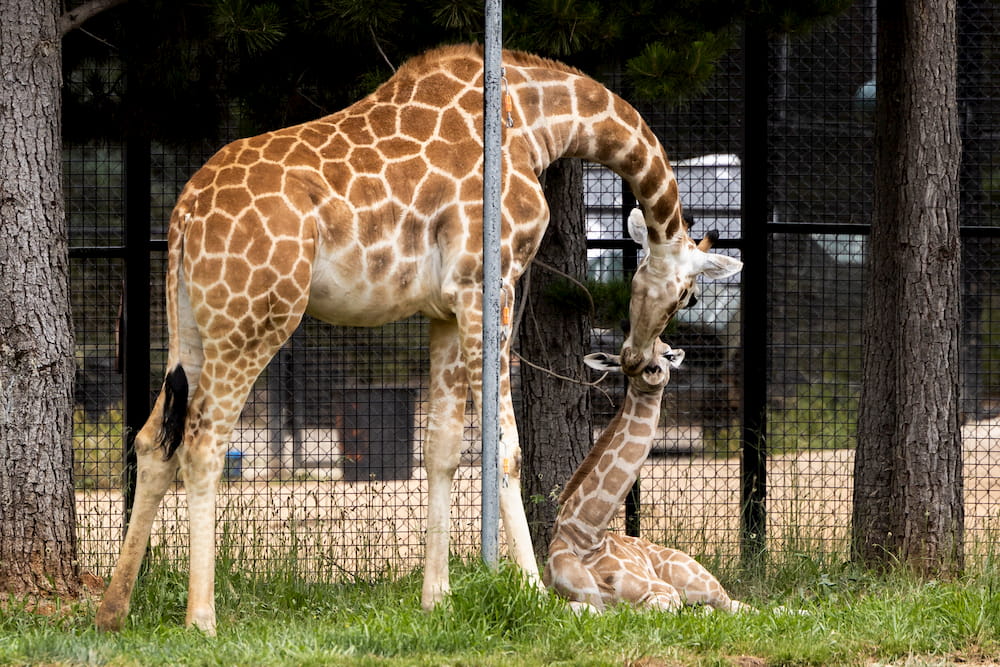Big sister Nzuri was caught off guard by the arrival of her clumsy baby brother, the first male giraffe calf born at Canberra’s National Zoo and Aquarium.
Nzuri was born last year and hoofstock supervisor Sophie Dentrinos said she took a few days to get used to the idea of having a younger sibling.

“She was quite petrified of him when he arrived, she was spooked by this thing that suddenly appeared!” she said.
“Now they’re really good playmates.”
Within an hour of birth, the yet-to-be-named addition to the family of giraffes was up on his feet, which have distinctive dark markings, while Ms Dentrinos happily watched the whole thing on CCTV.
“They have to get up really quickly to keep moving with mum, and to reach her milk as well. It’s important they get that first suckle really quickly,” she said.
“We pretty much leave them to their own devices as much as we can.”
Staff observed the healthy young male was growing an incredible two and a half centimetres per day.
“One day he was walking under a fence, the next day he was hitting the fence, so I was like ‘Wow, you’ve grown quite a lot overnight!” Ms Dentrinos said.
Zookeepers cleared the enclosure of as many obstacles as possible while the new calf learned to walk and run, however, he still managed to get up to mischief.
“He was really cheeky and inquisitive right from the beginning.
“He was giving us a few grey hairs straight away, he was walking into things and tripping over things because he wanted to explore his environment.
“It’s quite a skill to work out those legs!”
Once he’s off and racing, he’ll be a sprinter, not a marathon runner; over short distances giraffes can reach speeds over 55 kilometres per hour whereas over longer distances the average speed would be around 15 kilometres per hour.
Mum Mzungu and dad Shaba knew the routine – this was their third calf – and there were no complications during the birth, which giraffes perform standing up.

Msungu went into labour around 10pm and the new calf was born just two hours later in the early hours of Thursday 15 October.
Giraffes don’t typically like to be touched, but with training and time, the zookeepers have built trust with the experienced parents, which enabled staff to closely monitor the 14 and a half month pregnancy.
“Males don’t play a huge role in rearing the young, they’re fairly nomadic in the wild, so they’ll move between separate herds looking for females to mate with,” Ms Dentrinos said.
“But mums will often hang out with other mums and have their older calves around to help keep watch for predators.”
The experienced parents have resided together at the zoo for six years since being genetically matched as part of a regional breeding program and Ms Dentrinos said they were very successful right from the beginning.
She said it was more important than ever that giraffes in captivity boosted an “insurance population,” given their numbers in the wild have declined by more than 30% in the last three decades.
The calf’s name will be announced on Monday 23 November and staff have proposed six options: Shavu, Huru, Amanzi, Kahmisi, Usiko or Soksi.

For more news:



